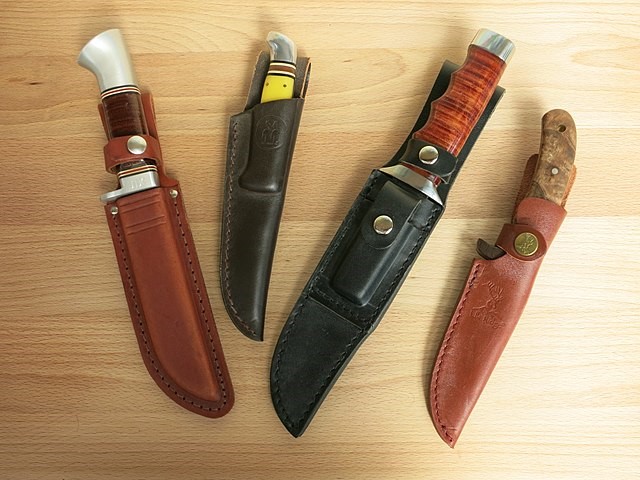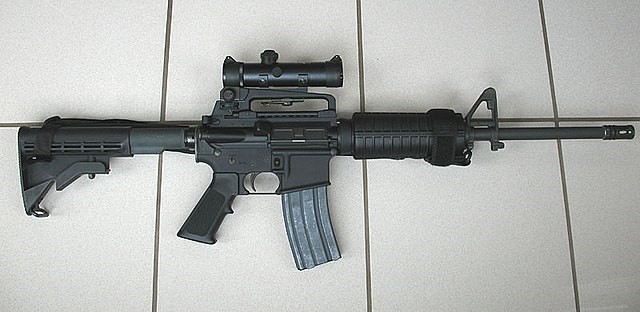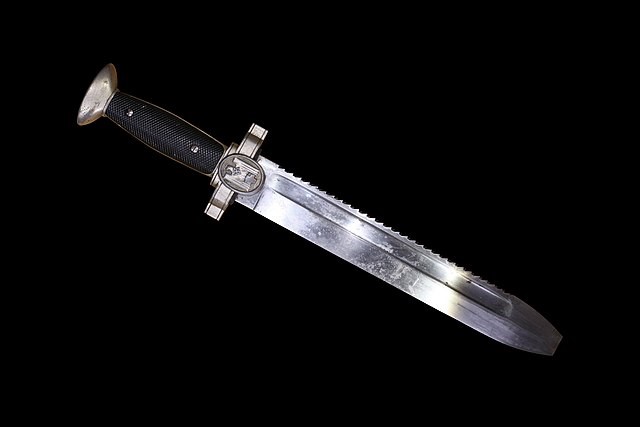
By Steve Pomper

People either don’t think about the Second Amendment beyond guns or don’t know it applies to arms other than guns, such as bladed weapons, i.e., knives, swords, etc. That edged weapons are included as arms should be obvious, since the Framers were precise when creating the U.S. Constitution. They don’t specify firearms.
Today we are less precise with people wanting to outlaw some guns and not others even though they operate identically because they look scary.

AR-15 Semi-Automatic Rifle

M14 Semi-Automatic Rifle
Similarly, in 2016, according to Smithsonian Magazine, the Supreme Court ruled, essentially, kitchen knives are not protected by the constitution because they’re “utility tools.” But a knife that is a “weapon” is constitutionally protected despite the utility tool and the weapon operate nearly identically. Both can be used to kill or slice a pickle.

Kitchen knives
They inserted each amendment exactly where it belongs and specifically selected each word. It’s not just a gun-rights talking point that the Second Amendment is a high-priority in the Bill of Rights—coming second. It was that important.
However, weapons other than firearms get scant attention within the scope of the Second Amendment. And, in some jurisdictions, infringe doesn’t seem any more important for knife as for gun rights.

WWII German Dagger
The path can be treacherous in some states for law enforcement officers attempting to enforce knife laws. We have limited time and space to cover 50 states, localities, and U.S. territories worth of laws. So, let’s take the state I live in, for example. Washington State is, either on purpose or by accident, one of the weirdest states regarding its knife laws.
Washington’s knife statutes seem bound for court review someday, but it’s been on the books since 1994, so it’s anyone’s guess when. People can legally own (to keep) dirks, daggers, and other “stabbing kni[ves].” Even a Bowie knife, stiletto, a “disguised knife like a lipstick or belt buckle” knife, or a shuriken (throwing star) are legal—to own.

General’s Dirk, Russia
But what about carrying, open or concealed (and bear), knives? Referring to the list above, you may not carry concealed a dirk, dagger, or “any dangerous weapon.”
That part, whether you agree or don’t with carrying knives, is, at least, simple. But it gets much more complicated (absurd).
“It is also illegal to carry or display a dagger, sword, knife, or other cutting or stabbing instrument in a manner or under circumstances that would cause alarm or show an intent to intimidate another.” That’s not the absurd part either. That makes sense.
It also makes sense that, as the Washington State Supreme Court found, “there must be a sufficient basis for the alarm, such that a reasonable person would be alarmed” to make a complaint. It would be fine if they stopped there. But they don’t.
As for absurd: In State v. Byrd (1994), the State Supreme Court said, “that because the display of a weapon in a manner that caused reasonable fear or alarm could be done without intent, a violation of the statute did not require intent. This means that one does not have to intend to cause alarm or fear in order to be guilty of a crime under the statute.”
That’s a weird ruling, and Washington hadn’t legalized pot, yet.
So, if you choose to carry a knife in a sheath on your belt, despite having no intent to “cause alarm or fear…,” if someone is alarmed or fearful anyway, police could arrest you, and a court could find you “guilty of a crime under the statute.”
It appears, if you carry a knife visibly on your person, you’re fine unless someone decides to feel alarmed. What?
During my career, I came across lots of knives. Sometimes carried by people who would have hurt me with it if they could have and some who tried. But I never came across a “victim” who said they were “alarmed” by someone with a knife on his belt. But, apparently, they could have.
Truthfully, I wouldn’t have arrested or filed charges against a person because someone was “alarmed” by that person carrying a knife. Again, honestly, I never would have imagined such an apparent defect in a law existed (maybe a justice could explain it).
To recap: Washington law allows you to openly carry a knife, as long as you don’t do it in a way that alarms another person, unless that person is alarmed because you’re carrying a knife. Ouch! My head hurts.
Remarkably, this “intent nuttiness” makes this knife law hard to summarize. For example, the Knife Up website says, “It is illegal to conceal carry a dirk, dagger, or other dangerous weapon. It is legal to open carry any type of weapon, so long as it is not carried in a way that may cause others alarm.” Note: Unless someone believes it is.
By contrast, just as an example of how varied knife laws are in the U.S., take South Carolina. According to Knife Up, “South Carolina has one of the least restrictive weapons laws when it comes to owning and carrying knives. The laws specifically mentioning knives is [sic] practically non-existent, and difficult to find.”
According to the American Knife & Tool Institute (AKTI), in Arizona, there are “No prohibited knives. If you’re over 21 years of age, you can carry concealed.”
As I mentioned, we cannot go through all the knife laws in the U.S. But, if you’ve ever wondered about your state’s knife laws, even if you’re a cop and think you know it, you can research it, including at the KnifeUp.com.
Regardless, in America there doesn’t seem to be another item, arms, guns and knives, where leftist politicians want to punish people who legally carry and use arms specifically because of people who illegally carry and use arms. Society treats no other common use item like that. If cars were treated that way, taking cars away from people who use them legally because of people who use cars illegally, no one would be driving.
But leftists keep and bear cars, not guns. Because of that, cars don’t fit the narrative.